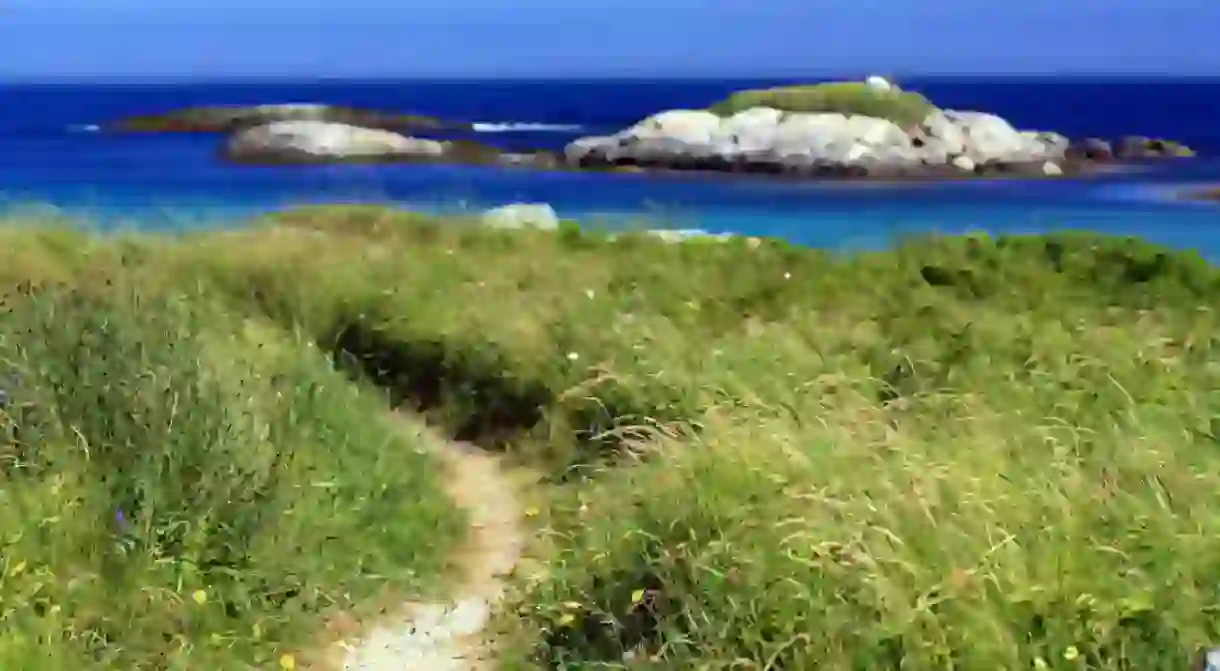Nova Scotia’s UNESCO World Heritage Sites

Nova Scotia is home to five UNESCO World Heritage Sites, and a visit to even just one will give you a look into the fascinating culture, natural beauty, and historical relevance that the province has to offer. However, if you get the chance, we highly recommend that you visit all five of these unforgettable spots.
The Landscape of Grand Pré
Canada’s 16th UNESCO World Heritage Site, the Landscape of Grand Pré, is honored for the importance that the land played in the lives of its 17th-century Acadian settlers. It was on this 13-square-kilometer (five-square-mile) stretch of farmland that the Acadians first introduced the dike system, and the area is also home to the setting of renowned American poet Henry Wadsworth Longfellow’s poem Evangeline: A Tale of Acadie.
Today, you can learn about the history and deportation of the Acadian people at the Grand-Pré National Historic Site and explore the area’s many vineyards, towns, and restaurants.
Today, you can learn about the history and deportation of the Acadian people at the Grand-Pré National Historic Site and explore the area’s many vineyards, towns, and restaurants.
Old Town Lunenburg
A visit to the beautiful port town of Lunenburg is a must for any trip to Nova Scotia, and its designation as a UNESCO site is a no-brainer! Colorful, historic homes line the streets along the town’s harbor front, and you’ll easily fill a day with the multitude of museums, restaurants, shops, and activities.
Lunenburg is one of only two urban communities in all of North America to be named a UNESCO World Heritage Site, and it’s considered to be North America’s best surviving planned British colonial town. It was an important shipbuilding port in the 18th and 19th centuries, and it is home to the famed Bluenose II sailing ship.
Lunenburg is one of only two urban communities in all of North America to be named a UNESCO World Heritage Site, and it’s considered to be North America’s best surviving planned British colonial town. It was an important shipbuilding port in the 18th and 19th centuries, and it is home to the famed Bluenose II sailing ship.
Southwest Nova Biosphere Reserve
The Southwest Nova Biosphere Reserve spans over 1.5 million hectares, making it one of the largest reserves in all of Canada. There is so much going on in this area that you could spend an entire vacation here. You can explore the stunning natural diversity, which includes the Bay of Fundy, beaches, Kejimkujik National Park, the Dark Sky Preserve, and the Tobeatic Wilderness Area. You can also dive into the varied local culture and discover the history of the Mi’kmaq, Acadians, Loyalists, African Nova Scotians, and others who built this area into what it is today.
Joggins Fossil Cliffs
Joggins Fossil Cliffs, located along the picture-perfect Bay of Fundy, is a must-visit for geology enthusiasts. The area earned itself a UNESCO designation because it holds the world’s most complete record of life in the Carboniferous era. It has drawn visitors for the past 150 years, who flock to the cliffs to study the fossils that give us a glimpse into what life was like during the “coal age.”
For guided tours and more information, be sure to visit the Joggins Fossil Centre.
For guided tours and more information, be sure to visit the Joggins Fossil Centre.
Bras d’Or Lake Biosphere Reserve
The beautiful Bras d’Or Lake area was named a UNESCO Biosphere Reserve in recognition of the relationship that the area’s inhabitants have forged with the environment. The people of the region are descendants of the five original Mi’kmaq bands as well as early French, Scottish, and English settlers, and they continue to be committed to preserving both the environment and culture of their home.
Today, there are so many ways to enjoy this beautiful spot, including boat rides, hikes, and partaking in the local culture.
Today, there are so many ways to enjoy this beautiful spot, including boat rides, hikes, and partaking in the local culture.













